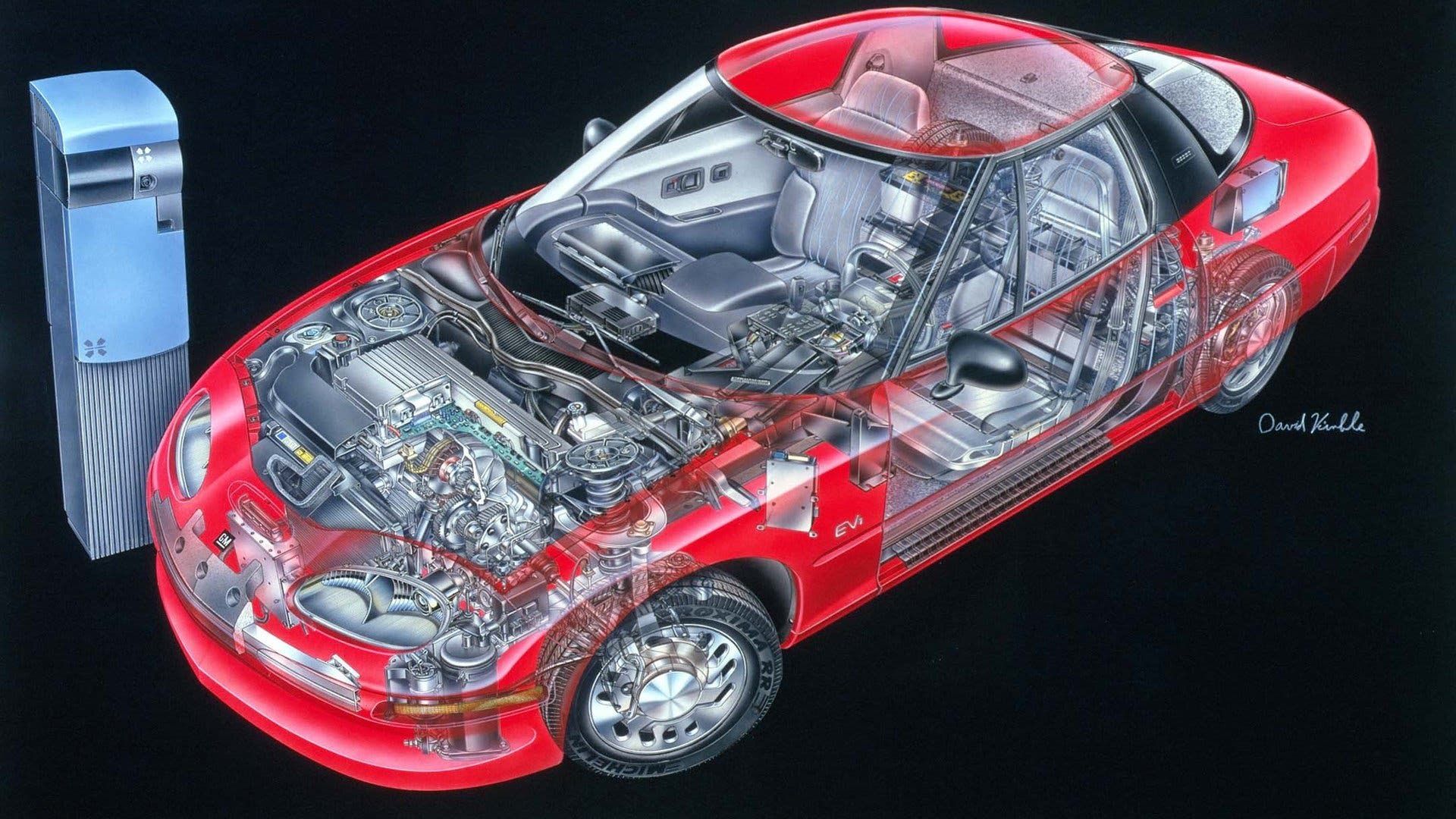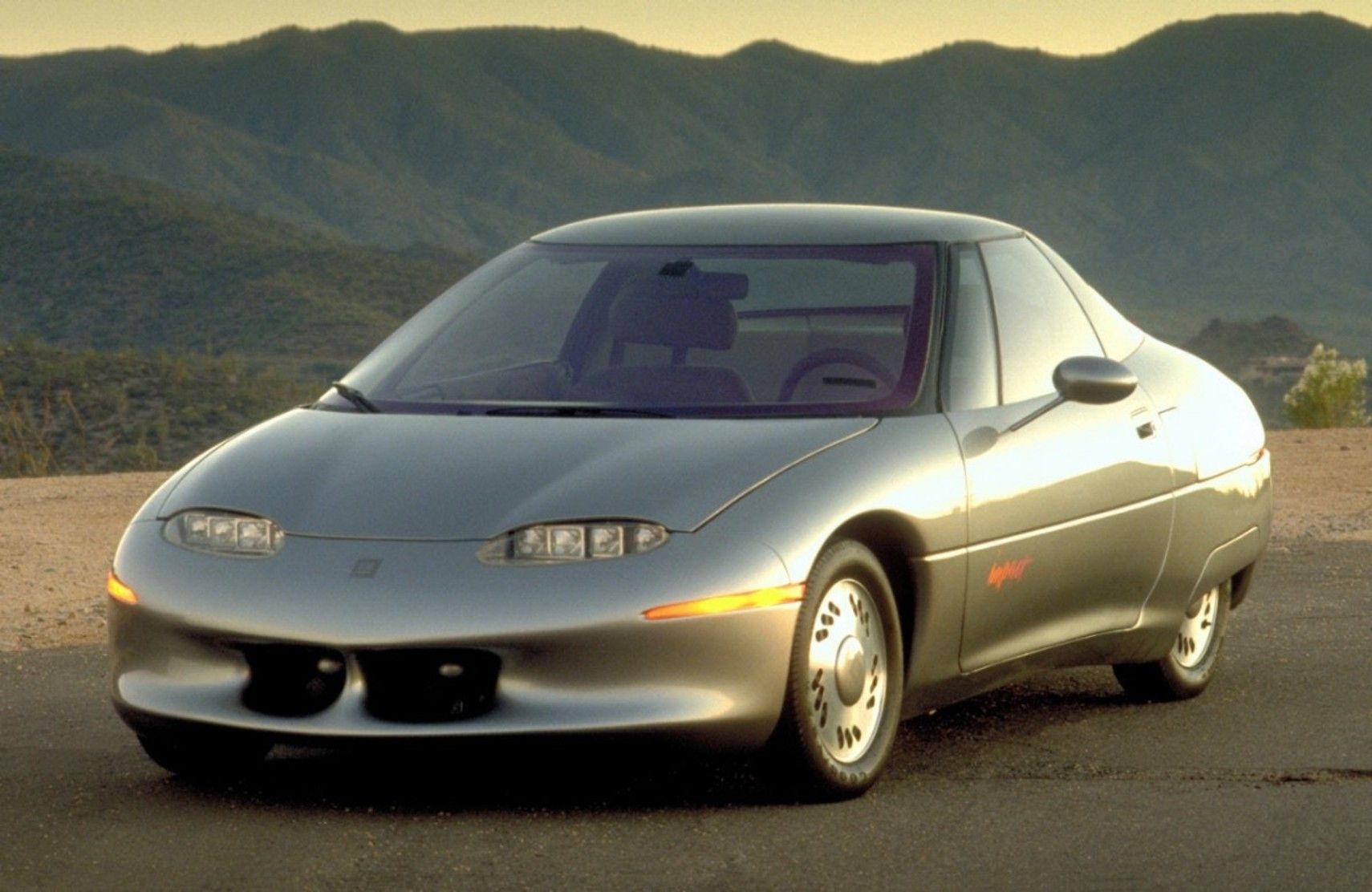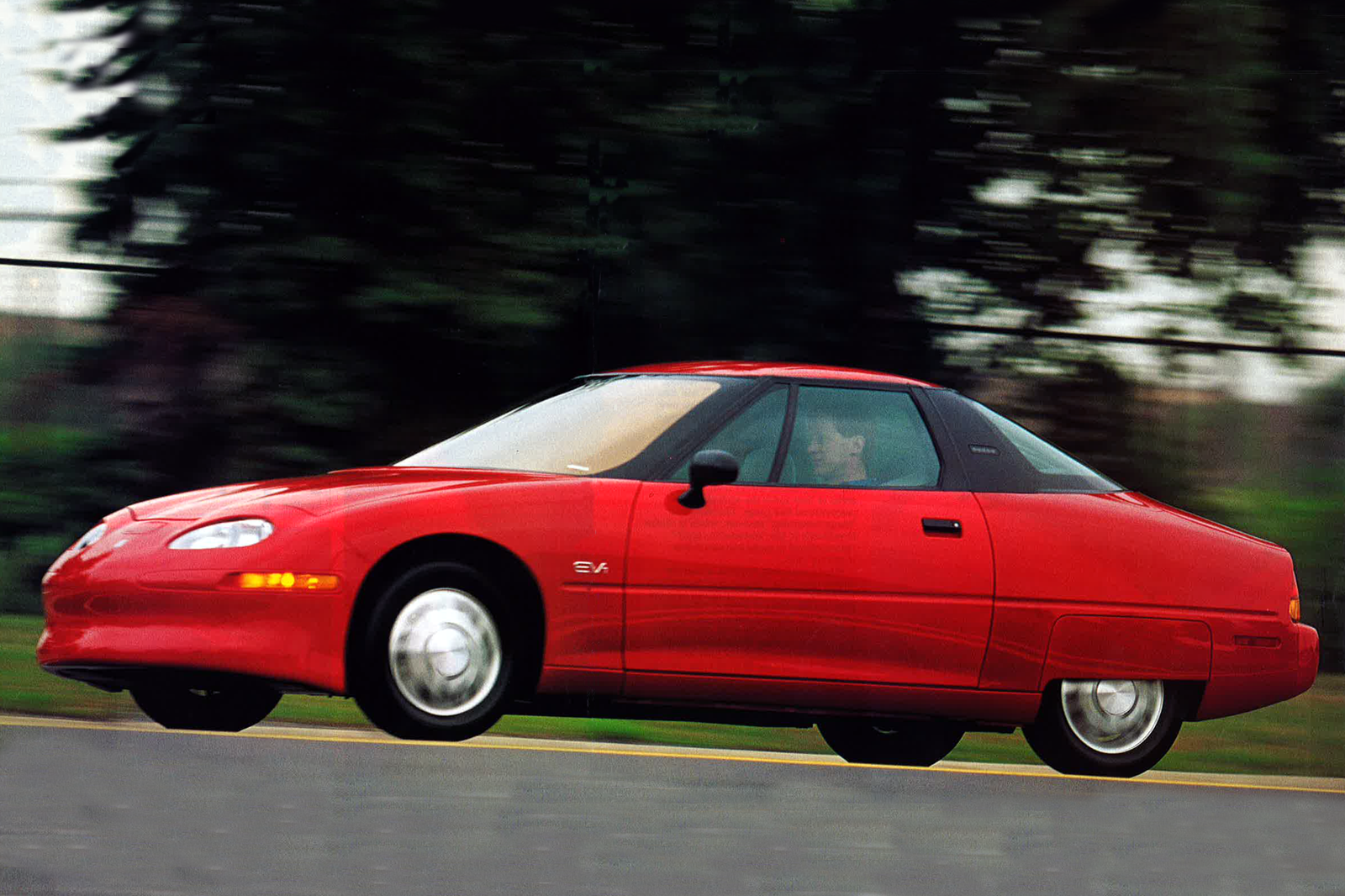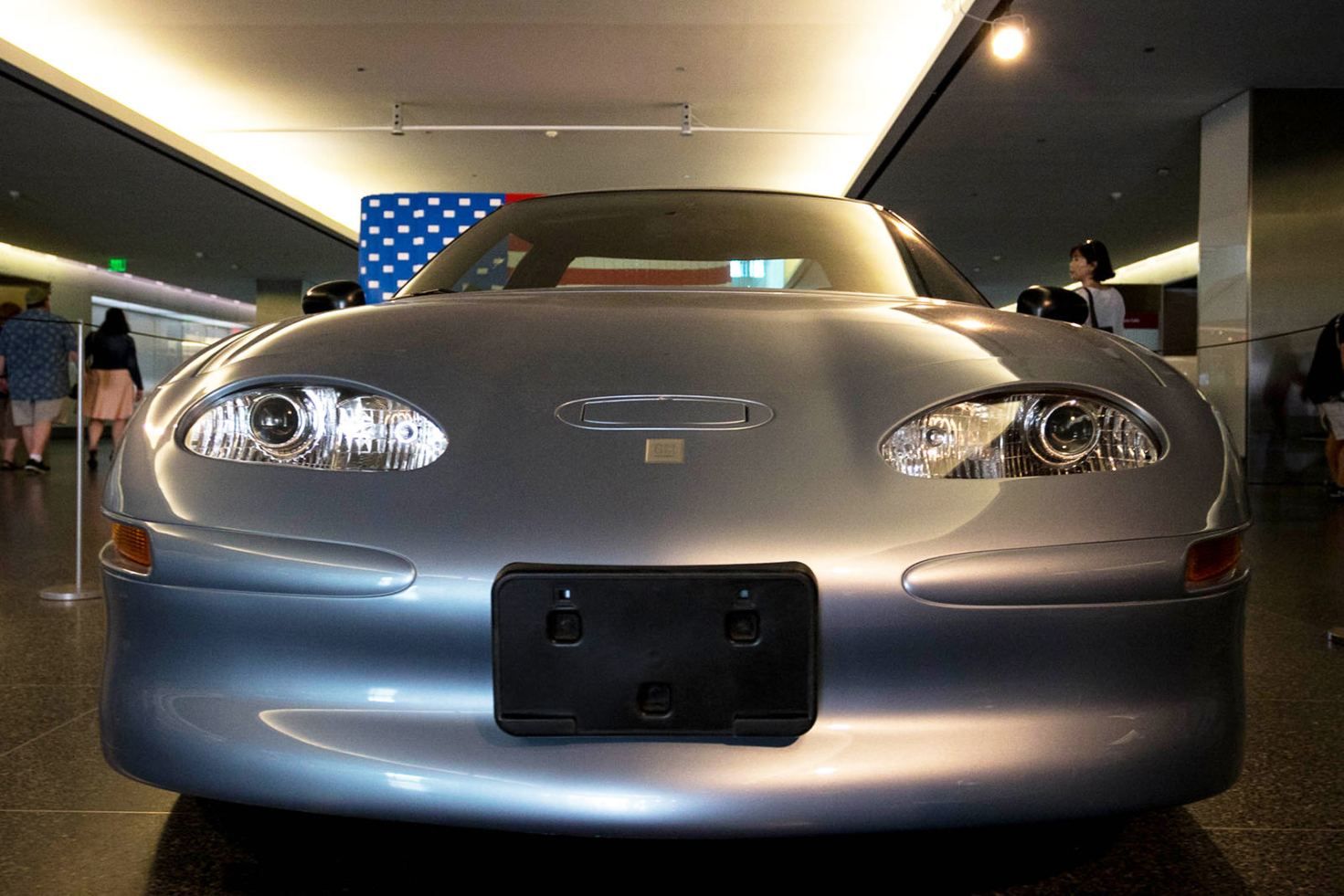The earliest example of an electric vehicle goes all the way back to 1832, which was created by the Scottish inventor Robert Anderson. Granted, his electric car (or horseless carriage) ran on single-use batteries, and generated power using oil. So yes, you could get somewhere with an electric motor, but only once.
Electric cars existed in the early 1900s as well and were available for the general public, but they were expensive and scarce. Henry Ford with his mass-produced automobile easily beat out those funny electric cars. Gasoline became king, and electricity became a luxury. That is until GM came along.
With electric cars slowly becoming mainstream by the early 90s, GM set out to create a mass-produced electric car for the public, as well as meet new California emissions mandates. Every automaker now had to produce a small variant of zero-emissions vehicles, which led many automakers to simply throw an electric motor into an already established model.
Unlike their competitors, GM didn't want to take the easy route, which led to the design and production of the EV1: the first mass-produced electric vehicle that was built entirely from scratch.
The EV1
The idea of mass-producing was first announced at the 1990 L.A. Auto Show by the company's former chairman, Roger Smith. He brought an electric concept car with him, based on the chassis of the Sunraycer, the car that raced and won the 1987 World Solar Challenge, along with the claim that it was producible. And the minimum number of electric cars produced only had to be around 20,000 units, Smith stated he felt more comfortable with 100,000.
Six years later, the first EV1 rolled off the production line. When compared to electric cars of today, the first generation EV1 wasn't much to sneeze about: 134 brake horsepower from the 3-phase AC electric motor, powered by a 312-volt lead-acid battery system (which was dated back in the '90s), and could go somewhere around 60 and 100 miles on a charge, give or take. Oddly enough, however, it was one of the first cars to use aluminum as the material for the frame. But with all the added tech packed in, ABS, traction control, keyless entry, and more, the cost ended up being steep: $34,000 back in 1996 (which is around $56,000 today).
Publicity And Popularity
In order for something to be mass-produced, it had to be massively popular, and it certainly sparked the public's curiosity. The public interest in the electric concept car showcased in 1990 was high, and it continued to grow as launch day grew near thanks to GM's highly aggressive marketing campaign.
Primetime television ads, billboards, brand new websites, GM did everything they could to get the EV1 in front of the average consumer, costing them a pretty penny to do so. But after sinking over $8 million into advertising, everyone and their mother knew that the EV1 was something special.
The car's release ended up being a monumental media event, though only California and Arizona residents were able to participate. Still, GM managed to lease 40 cars at the launch alone, many of them being politicians, celebrities, and environmental activists. However, all those high-end lessees could afford the EV1, while a typical car buyer did not.
It proved difficult to convince the general public that the price tag was worth it, but Joe Kennedy, Vice President of Marketing for Saturn, reminded the populous that "technology starts small and grows slowly before technology improves and costs go down." This is a promise potential buyers held, and it gave GM enough incentive to give the EV1 a rethink.
The Second Generation
Having gained enough traction to prompt a second generation, the quality of the EV1 was significantly improved while the cost was slightly lowered. It was fitted with a longer-lasting nickel-metal hydrate battery, which got the car up to 100-140 miles per charge. The car lost some weight, which increased performance and made the ride a bit quieter. And even with these improvements, the price dropped. The only payment plan for the EV1 was a lease which started around $399 a month for the first generation. But the monthly payments decreased to $349 a month.
457-second generation EV1s were produced, and after seeing all the television ads and observing the celebrities and stars tooling around in their car of the future, the general public wanted to get their hands on one. But the price hadn't changed enough to make that possible, it was still too steep. That, and the fact that leases were only offered to those residing in Arizona and California, made it tricky for people to stay interested in a car they'd never own.
While the public opinion didn't falter much, despite a few small recalls, public interest decreased through the early 2000s. The loyal EV1 enthusiasts were worried GM would pull the plug on the program because of this, and while GM officially stated that they were devoted to producing this electric vehicle, they soon went back on their word.
An Unfortunate End
By 2002, only 1,117 EV1s were on the road, and in 2003 the EV1 program was canceled altogether. The assembly lines had been shut down, and that should've been that. But it wasn't.
Rather than allowing customers to extend their lease, and renewing their agreement to keep the minimum 15 years worth of spare parts for maintenance and repairs, GM chose to repossess nearly every EV1 left on the road. This sparked outrage and controversy for those who had adapted to the EV1 being a part of their regular day to day, but GM kept on insisting that there wasn't enough interest in the program to keep it running. Even in court, they cited a study that consumers would only purchase an electric car if it cost $28,000 less than a gasoline-equivalent.
Repossession began in 2003, and only about 40 were donated to educational institutions and museums. The electric drivetrain was deactivated in order to make sure they never drove again, but the EV1s that weren't as lucky ended up in the jaws of a crusher.
Consumers and conspiracy theorists alike saw this as an unusual move, to say the least, but despite the very niche market, slim sales figures, and declining interest, GM claimed they didn't think the EV1 was a failure. The new nickel-metal battery technology didn't improve the EV1 as expected, and the program was just a tad before it's time. Though mainstream media begged to differ.
A documentary was made back in 2006 titled Who Killed The Electric Car? (available for free on YouTube Movies), claiming that GM didn't think the EV1 was a failure because it was planned to be doomed from the start. It also earned a spot on Time Magazine's list of "The 50 Worst Cars Of All Time," and while that opinion may have been based less on the car and more on how GM handled the situation, it still left quite a mark on the automaker's image.
The EV1's Legacy
Despite its slow beginning and controversial end, there's no denying that the EV1 started the conversation on mass-producing electric vehicles. Past executives of the company have admitted that nixing the EV1 program was a poor decision, one they still regret to this day. And even Elon Musk admitted that he founded Tesla as a reaction to seeing GM cancel the EV1 program.
While it's disappointing to look back and wonder how much further we could've come along had the program lived on, what technologies could've come sooner, there's a lot we wouldn't have today had Roger Smith never taken that first step in 1990, if he hadn't believed in the vision of a viable, mass-producible, mainstream electric car.
A dusty model of the EV1 was recently found in an Atlanta parking lot, meaning there's still some life in these little electric cars. And if you're keen on seeing one for yourself, the National Museum of American History in Washington D.C. has the last remaining, active EV1 on display in the "America on the Move" display. Had things been different, maybe there could've been more, but we'll never know.





